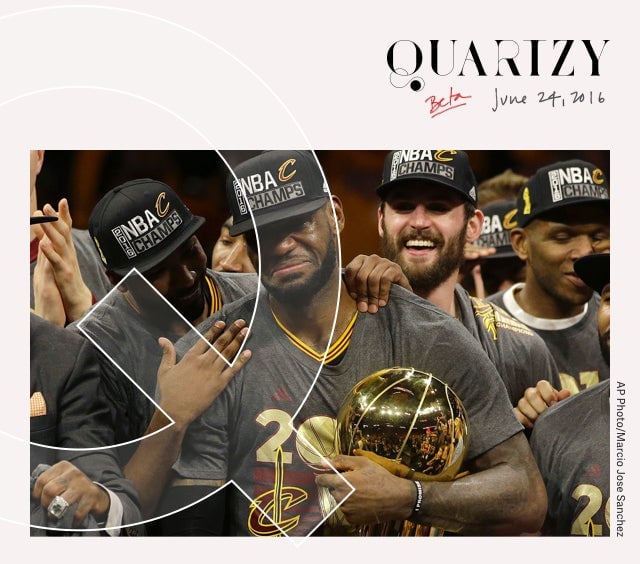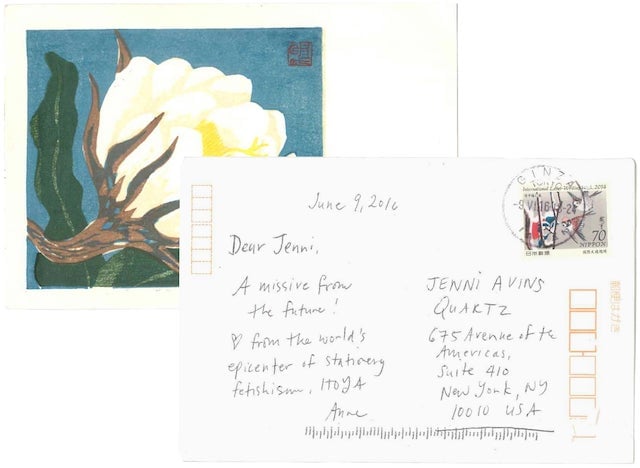Quartzy: the get vulnerable edition
Happy Friday!

Happy Friday!
“If you want to invite me to anything, I now have time.” So said Sree Sreenivasan in a Facebook post after he was publicly ousted from his highly-paid position as the Metropolitan Museum of Art’s chief digital officer last Friday. He offered himself for coffees, cocktails, and walks, and asked his network for advice: “Tell me what to do!” They responded by the hundreds, and job offers will surely follow.

I joined Sree on his commute across Central Park to learn how he turned a public firing into a Jerry Maguire-worthy moment of personal branding. I was cynical at first. I expected to find false optimism, but instead found Sree—a father of 13-year-old twins—quite open about the fact that he’s starting to sweat a little. Even in the midst of his predicament, Sree displayed vulnerability, generosity, and honesty, and he demonstrated that any of us would be wise to do the same when in a similar spot (or really, every day).
Let it out, LeBron. The Cleveland Cavaliers’ win on Sunday night (yes, I actually watched the last ten minutes) was epic for many reasons, but ultimately, it was all about native Ohioan LeBron James. “LeBron James,” wrote The New York Times, ”spent the past two seasons lugging his city’s championship dreams like a bag of rocks.” So it seems perfectly natural that after the clock ran out Sunday, LeBron fell to his knees and wept.

The internet quickly hashtagged and mocked the damp, crumpled face of #CryingLeBron, making the meme the successor to #CryingJordan—an image of a tear-streaked Michael Jordan captured during his 2009 induction to the Basketball Hall of Fame. Quartz’s Marc Bain argues that while, yeah, everyone is making fun of Lebron’s crying face (in the internet’s proud tradition of “mocking men displaying even the appearance of vulnerability”), the meme is also an honor: “If anything, crying LeBron is a testament to James’ position in NBA history and in culture more broadly, cemented more than ever with his triumphant performance in the finals.”
And man, did it look satisfying. I’d watch more basketball if it were always like this.
Brexit. Meanwhile, many are crying over the United Kingdom’s vote to leave the European Union. Quartz’s Cassie Werber, who co-hosted a brilliant and light-hearted video explainer about the stakes of the Brexit referendum earlier this week, today wrote about the grave loss that she—and so many young people across the UK who voted “remain”—felt upon learning the result this morning:
We thought that notions of the UK as a strong little island with tough borders and tight ‘control’ of its sovereignty was the stuff of the past—of a time before we became connected to the rest of the world through global channels of communication, travel, work, study, and friendship.
The result is also a reminder that in the US, we cannot afford to become complacent about Donald Trump.

Pen to paper. A ”Bullet Journal” is a notebook that’s a cross between a to-do list (of “bulleted” tasks), a diary, and a calendar. And it’s very hot right now. The basic elements are an index, a six-month plan, a single-month plan, a daily plan. Fanatics document their meticulous pages and enviable office supplies on social media. (They don’t look that busy, tbh.)

Quartz growth editor Kristin Oakley is trying it out, and showed the world how to set one up this week. (It’s more basic than that of the Instagrammer above, who put a bird on it.) “More flexible than a planner, and more organized than a regular journal,” is how she described the appeal.
A shrine to stationery. If you ask me, this is all just a welcome return to the good old paper planner. (Did you know there are “Filofax tours” on YouTube?) If you’re feeling that too, and going to Tokyo anytime soon, you’d be wise to visit Ito-ya, a century-old 12-story stationery emporium in the Ginza District. Quartz design reporter Anne Quito sent this postcard from there, and also got herself a custom-made notebook with a brown cover and shell pink pages.


手帳~ That means techo in Japanese, which roughly translates to notebook or planner, where techo culture is strong. As Anne examined, there’s some mind-clearing magic to keeping one. Here in New York City, I see a visit to McNally Jackson’s study store and Dick Blick in my near future.
Planning aside, we shouldn’t always be goal-driven. Our useless pursuits help form our identities, wrote journalist—and birdwatcher—Alex Preston, in an essay about the meaning of hobbies. “We wish to be known for that about us which rises above the merely productive.”

Hobbies of course, are a luxury. A surefire way to ruin one, says Preston, is by taking it too seriously, and turning it into work. So maybe don’t put “bake,” “surf,” or “birdwatch” on the to-do list in your bullet journal tomorrow.
Neil Young, who is now 70, was on Marc Maron’s podcast Monday. He reported that he feels great, and his speaking voice indeed sounded silky. He attributes that vitality not to honey slides, but to practicing pilates five times per week! Still, he said: ”Everything in moderation. Even moderation in moderation.”
Here’s to good cries, well-made notebooks, and useless pursuits. Have a great weekend!



Monday morning at 10am I’ll be co-hosting the dotNYC webcast, Jeff Jarvis’ show about the “geeks inside” the cultural engine of New York City. I wish we were doing this tonight over drinks because the guests are going to be great.
Kristen Miglore of Food52 and Michelle Goad of PS Dept will talk about developing their genius apps—for food and fashion, respectively—and Away Travel founder Steph Korey will tell us about building the Warby Parker of luggage. (I use and love all these things, so will strive to keep my fangirling in check.)
Watch and ask us questions on Facebook Live—and you can always listen later.